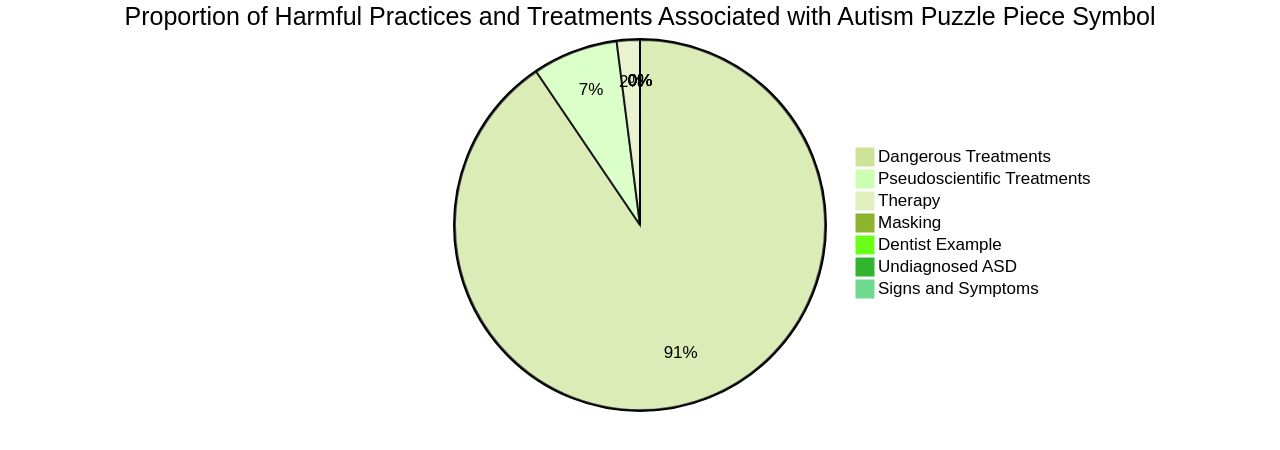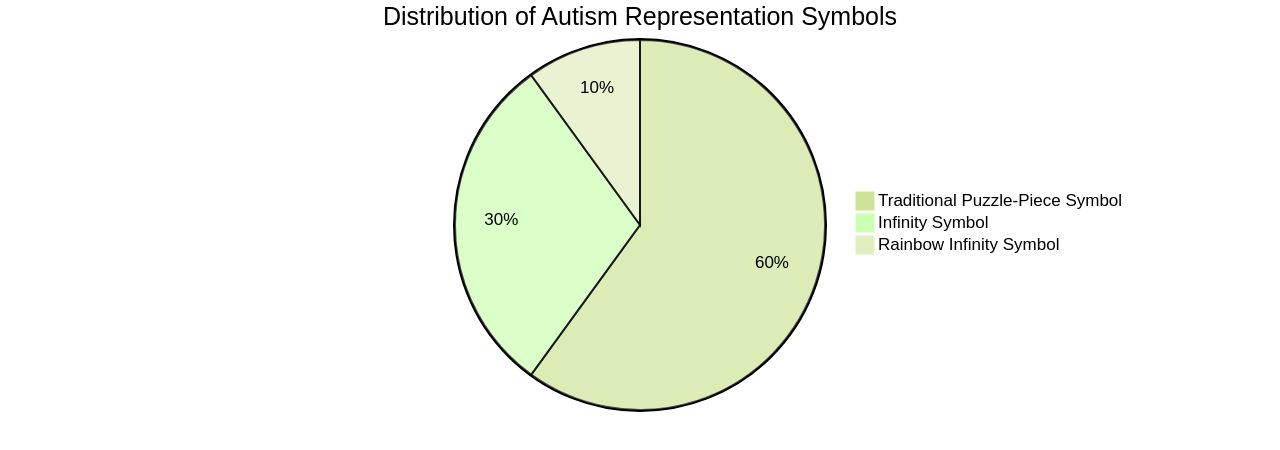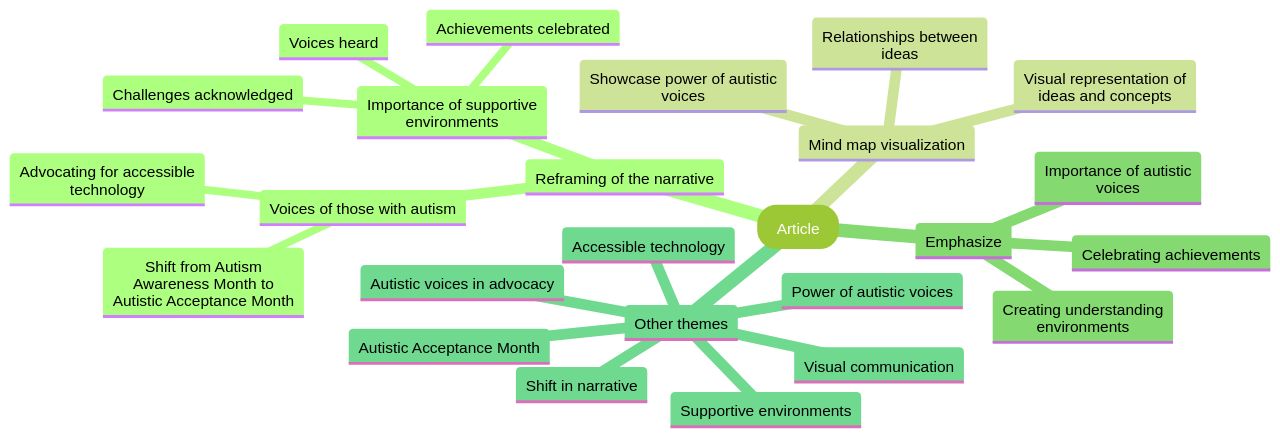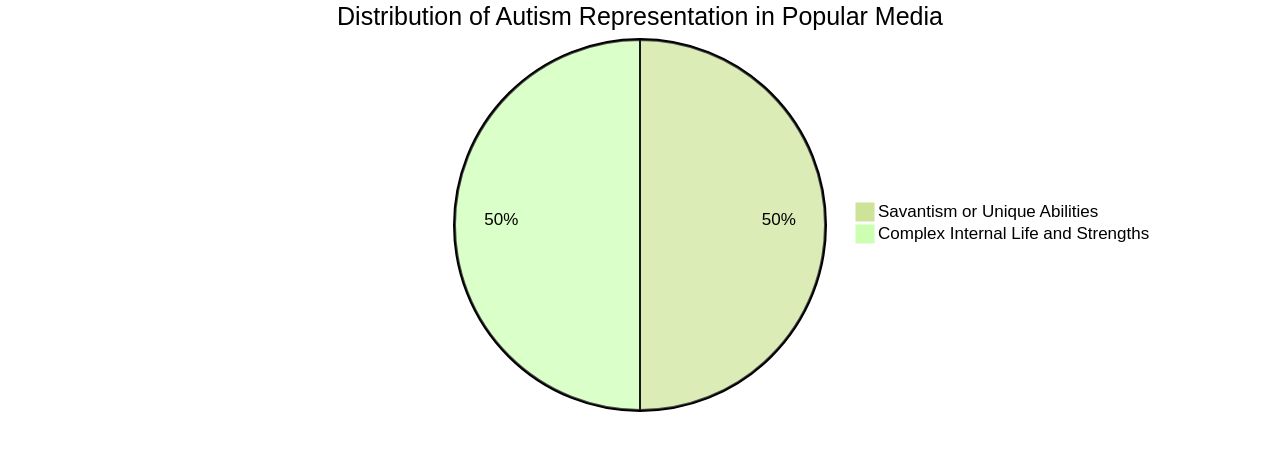Introduction
Autism awareness and acceptance have been symbolized by the Autism Puzzle Piece, but this emblem has sparked debates and controversy. Critics argue that it suggests individuals with autism are incomplete or missing a piece, shifting focus towards seeking a cure rather than fostering acceptance.
However, others advocate for viewing autism through both a medical and social lens, emphasizing the strengths and talents that come with it. As the understanding of autism expands, alternative symbols like the Infinity Symbol and Rainbow Infinity Symbol have emerged, aiming to create a positive and empowering representation.
The importance of this shift is underscored by the rise in autism diagnoses and the changing narrative around autism, driven by the voices of those who experience it firsthand. It is crucial to provide supportive and understanding environments for individuals with autism to express themselves without fear of judgment. As our grasp of autism deepens, society is shifting towards celebrating neurodiversity rather than trying to "fix" individuals with autism. The focus should be on promoting acceptance, understanding, and inclusivity, recognizing and celebrating the strengths and abilities of autistic individuals.
The Origin of the Autism Puzzle Piece Symbol
Autism awareness and acceptance have been traditionally symbolized by the Autism Puzzle Piece, an emblem that was introduced in 1963 by the National Autistic Society. This symbol was chosen due to its irregular and interlocking edges, reflecting the diversity and intricacies of individuals on the autism spectrum. However, it's crucial to note that autism is not a puzzle that needs a solution, but a condition that requires understanding and acceptance.
Recent studies show that autism diagnoses have seen a 700% rise in the past 20 years, with one in 36 children aged eight years old being autistic, a vast increase on the previously believed ratio of one in 100. This increase is partially due to the broadening definition of autism to include different presentations, such as in women and girls. Additionally, the stigma of the condition has been reduced thanks to the efforts of charities, media coverage, and policy changes.
Despite these strides, challenges remain. For instance, children with autism often struggle with social interactions and may engage in repetitive behaviors, which can lead to bullying and isolation. Moreover, a Deloitte report states that 85 percent of people on the autism spectrum are unemployed, compared to 4.2 percent of the overall population.
As a society, it's important to support autism acceptance every day. This includes providing resources, trained professionals, and early interventions for children with autism, which research has shown to significantly improve outcomes. By doing so, we can enable individuals with autism to live fulfilling, meaningful lives as integral members of our communities.

Controversies Surrounding the Autism Puzzle Piece Symbol
Over time, the Autism Puzzle Piece, a symbol that has been connected to autism for a long time, has sparked debates and controversy. According to critics, the use of the autism puzzle piece symbolizes that individuals with autism are incomplete or missing a piece, which can potentially cast a negative light on their condition.
Some even suggest that the focus on the autism puzzle piece symbolizes a shift towards seeking a cure for autism, rather than fostering acceptance and support. On the contrary, numerous individuals, including Prof Sir Baron-Cohen, director of the Autism Research Centre at Cambridge University, advocate viewing autism through both a medical and social lens, like fitting together the pieces of an autism puzzle.
He emphasizes that certain aspects of autism, such as remarkable attention to detail, superior pattern recognition skills, and a preference for depth over breadth, are indeed strengths and talents of individuals with the autism puzzle piece. A 2021 study in the Journal of Child Psychology and Psychiatry highlighted the increase in autism diagnoses over the past two decades, emphasizing the autism puzzle piece with a reported 700% rise.
The rise, in part, suggests that it results from a broader definition of autism, with the puzzle piece being the key element, that now includes how women and girls present. Meanwhile, organizations like Autism Speaks, which is often associated with the autism puzzle piece symbol, have faced criticism for their messaging and lack of condemnation towards horrific crimes committed against people with autism. Such controversies, like pieces of the autism puzzle, have sparked debates about the impact of these organizations' messaging on public perception. Autism, undoubtedly, presents a complex spectrum of strengths and challenges. Perhaps it's time for a symbol that encapsulates this diversity and fosters understanding and acceptance, rather than implying a need for a 'fix'.
Criticisms of the Autism Puzzle Piece Symbol
Critiques of the Autism Puzzle Piece symbol arise from its historical association with harmful practices and treatments. These treatments, often pseudoscientific and dangerous, have been marketed as solutions to 'cure' or 'fix' autism, leading to potential harm within the autism community. The symbol has been linked to instances where parents of autistic children have been misled into exploring unscientific alternative treatments.
For instance, in Saint Mary’s County, Maryland, in 2014, a horrific crime against an autistic teenager received light sentences, highlighting how public perception can be swayed by such symbols. Misinformation about autism, such as attributing it to vaccines, parenting styles, or nutrition, has been debunked by scientific research. Autism is now understood as a result of variations in brain structure and potentially linked to heredity and genetics.
The rise in autism diagnoses, a seven-fold increase in the UK over the past 20 years, has led to greater awareness and understanding of autism as a spectrum of traits and abilities, rather than a disability. However, the journey towards acceptance and understanding is far from over. As noted by one autistic individual, while organizations may celebrate Autism Acceptance Month, there is a need for sustained commitment and support for the autism community beyond these celebratory occasions.

Alternative Symbols for Autism
The representation of autism has evolved over time, shifting away from the traditional puzzle-piece symbol, which has elicited mixed responses from the autism community. Some find it offensive, suggesting a need to 'fix' the autistic individual, while others view it as a testament to their uniqueness.
However, the symbol's association with incompleteness, imperfection, and oddity has led to the advent of alternative symbols. The Infinity Symbol, for example, signifies the limitless abilities and strengths inherent in those with autism.
The Rainbow Infinity Symbol goes a step further, incorporating the principles of neurodiversity, inclusivity, and acceptance. These symbols aim to create a positive and empowering representation of autism.
The importance of this shift is underscored by the rise in autism diagnoses, due in part to broader definitions and increased advocacy. As the understanding of autism expands, it reveals not just challenges but also unique strengths and talents, such as exceptional pattern recognition and attention to detail. The narrative is changing, with an emphasis on accepting and celebrating the differences rather than trying to 'solve' them. This transformation in perception and representation is vital in fostering an inclusive society where every individual's uniqueness is recognized and valued.

The Importance of Autistic Self-Advocacy
The narrative around autism is being reframed, driven by the voices of those who experience it firsthand. Consider, for instance, Dan Harris, a father who ardently advocated for his non-speaking autistic son, Joshie, at an UNESCO event, like a missing piece of the autism puzzle.
His plea for more accessible technology mirrors the sentiments of many in the autism community. By utilizing an electronic tablet for communication, Josie was able to express himself, highlighting the potential of such tools to unlock new avenues of communication, like a missing piece of the autism puzzle.
The power of visual communication for individuals on the spectrum is further highlighted by Harris' campaign to install 100 picture boards in Peterborough, which features the autism puzzle piece. The transformation of Autism Awareness Month to Autistic Acceptance Month is another testament to the evolving narrative of the autism puzzle piece.
The shift in language represents a move away from perceiving autism as an illness and towards acknowledging and embracing neurodiversity, like fitting the autism puzzle piece. However, the journey to acceptance is not without its challenges.
Adolescents on the autism spectrum often grapple with integrating their diagnosis into their self-concept, which can impact their identity development. It is crucial to provide supportive and understanding environments where individuals with autism puzzle piece can freely express their true selves without fear of judgment. Creating spaces where autistic voices are heard, their challenges acknowledged, and their achievements celebrated can be achieved through the use of compassionate, inclusive language, like a puzzle piece that represents autism. It's crucial to keep in mind that autism is not an obstacle, but rather a puzzle piece of thinking and being. It's time we listen, learn, and allow the voices of the autism community to guide our understanding and actions.

The Future of Autism Representation
As our grasp of autism deepens, society is shifting its gaze towards the celebration of neurodiversity, rather than a need to 'fix' or 'complete' individuals with autism. This shift is reflective of the growing prevalence of autism, with 1 in 36 children now being diagnosed with the condition. Notably, this rise isn't due to an increase in the condition itself, but a broadening of diagnostic parameters and better understanding of the condition.
The neurodiversity movement is gaining momentum, with discussions about it happening everywhere from schools and homes to workplaces and research sectors. This movement acknowledges the diverse range of human minds, much like we acknowledge cultural and gender diversity, and views this variation as a natural occurrence and a benefit to humanity as a whole. However, it's crucial to note that the representation of autism in media and onscreen productions has often been skewed and unrepresentative.
The portrayal of autistic individuals in popular media, such as Rain Man and the 2021 movie Music, has often focused on savantism or unique abilities, rather than the lived experiences of those with autism. These representations often overlook the complex internal life of autistic individuals, focusing instead on external behaviors. There is a need to focus on the strengths and abilities of autistic individuals, such as hyperfocus, sensory perception differences, special interests, and resilience.
Recognizing and celebrating these strengths can lead to reduced stigma, improved social inclusion, and better educational and employment outcomes for individuals with autism. In conclusion, the focus should be on promoting acceptance, understanding, and inclusivity. This is key to creating a society that values and supports individuals with autism, rather than fixing them.

Conclusion
The representation of autism is evolving, shifting away from the puzzle-piece symbol to alternative symbols like the Infinity Symbol and Rainbow Infinity Symbol. It is crucial to create supportive environments that promote acceptance, understanding, and inclusivity for individuals with autism.
Supporting autism acceptance through resources, professionals, and early interventions enables individuals with autism to live fulfilling lives as valued members of our communities. However, challenges persist in helping adolescents integrate their diagnosis into their self-concept.
As our understanding of autism deepens, society is embracing neurodiversity rather than trying to "fix" individuals with autism. Recognizing and celebrating their unique strengths such as hyperfocus, sensory perception differences, special interests, and resilience can reduce stigma and improve social inclusion.
Moving forward, it is vital to focus on the strengths and abilities of autistic individuals. By embracing neurodiversity and creating supportive environments, we can build a society that values diversity and champions the well-being of all its members. In conclusion, promoting acceptance, understanding, and inclusivity should be prioritized in representing autism. By celebrating the strengths and talents of autistic individuals and creating supportive environments for them to thrive, we can foster a society that values diversity and supports the well-being of all its members.




